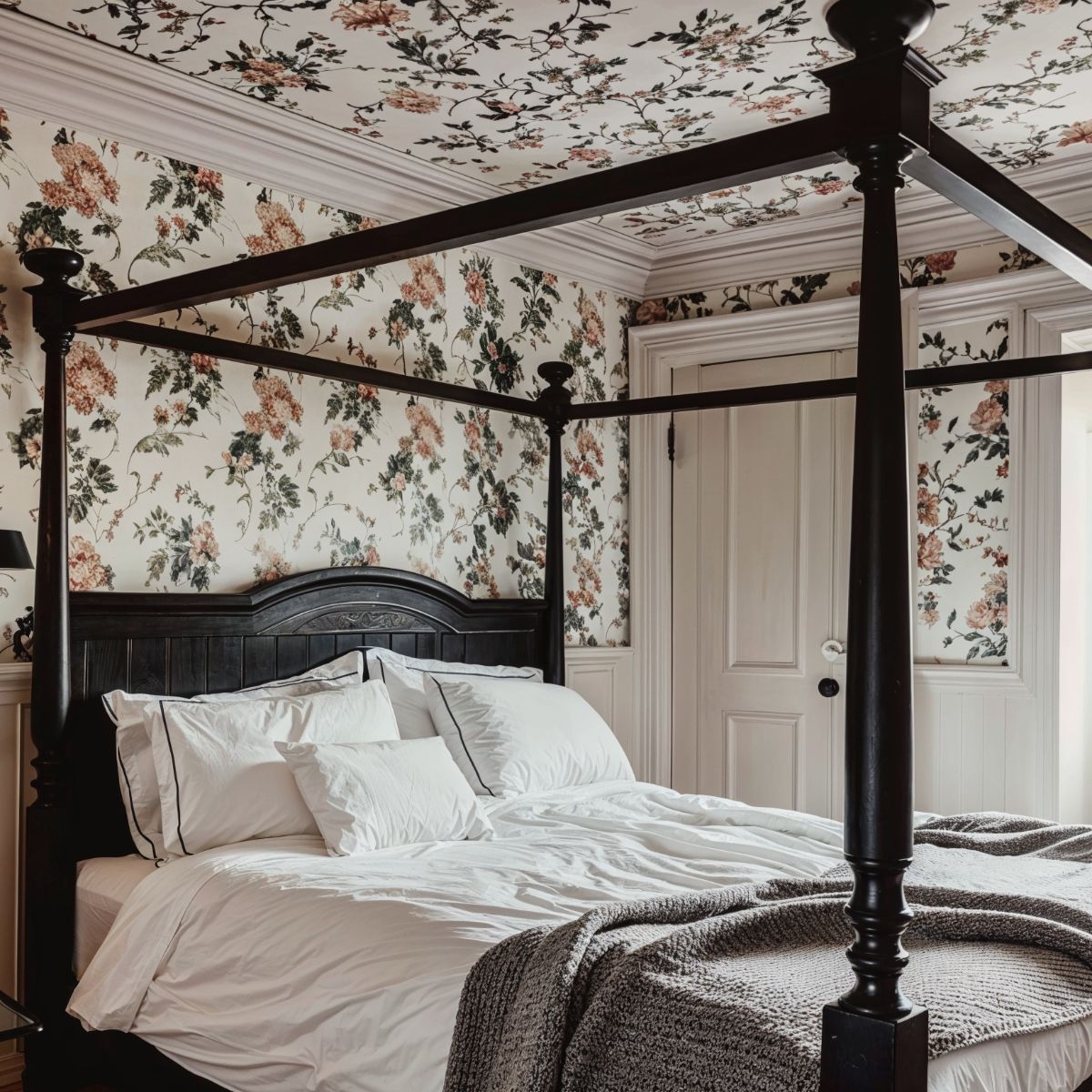How can you create a practical, calm and cocooning haven for sleep, no matter the size of your bedroom, you ask? We speak with the experts to find out…
On average, we spend almost 10,000 days, or 26 years of our life, in bed, so curating a calming, functional bedroom is as vital as designing the perfect kitchen. Careful planning is necessary to ensure your bedroom is practical, comfortable and tailored to your needs.
Whether you’re looking to overhaul a sprawling master suite, a compact guest room, or a good-sized loft, KBB journo Jennifer Grimble shares the dos and don’ts of bedroom design, so you can create the ultimate serene space.

Small bedrooms
When working with a compact footprint, a clever layout is critical. First, position the bed. Placing it against the longest wall frees up valuable floor space but, if possible, centralise it. “In a small space, symmetry creates calm, balance, and a sense of order,” explains interior designer Rose Deeb.
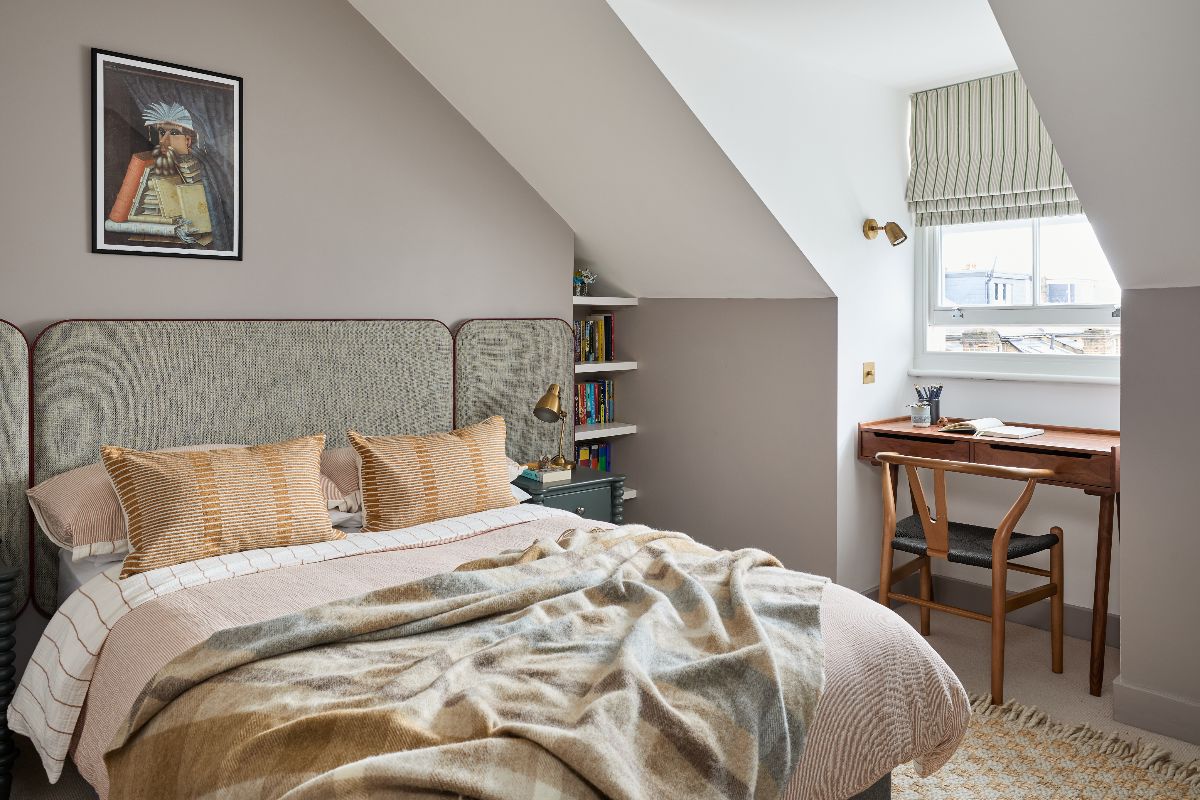
Avoid overcrowding with too much furniture. “Instead, focus on essential, multifunctional pieces, such as a divan bed with built-in storage,” suggests Shelley Cochrane of Furniture Village.
Off-the-shelf products don’t always make the most of every inch, so awkward rooms benefit from bespoke solutions like open shelving, wall-to-wall wardrobes, or a headboard with integrated alcoves. To visually expand the space, opt for tall storage units, an oversized rug, or vertical lines through wallpaper or full-length curtains.

Colours and materials
Pale, neutral colours will reflect more light, but dark hues create intimacy. “Try colour drenching the walls, ceiling, and woodwork in the same deep shade, adding lighter accents for cosiness,” says Clare Bolger of No Space Like Home. “This works especially well in smaller bedrooms where the lack of contrast and visual breaks can make the space feel bigger.”
Lightweight fabrics can also help create a sense of openness, while heavy patterns may overwhelm. “Mirrors are also fantastic for creating an illusion of depth. Place one opposite a window to reflect light,” says Melissa Denham of Hammonds Furniture.
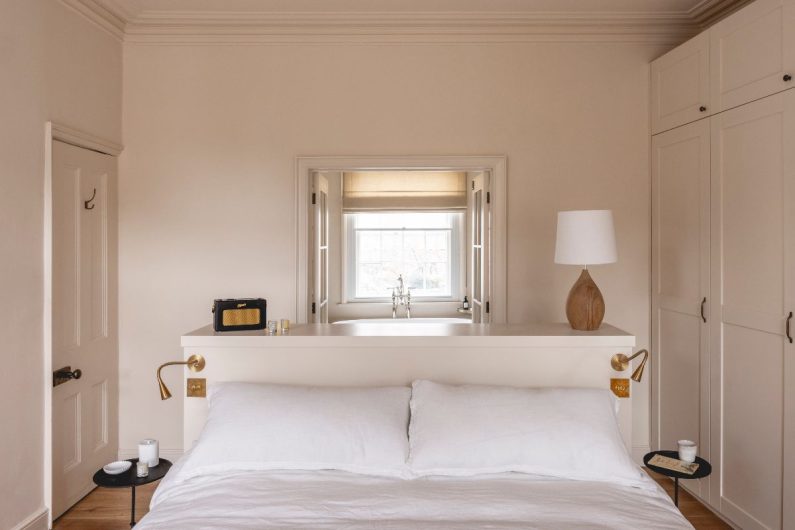
Medium bedrooms
Designing a medium-sized bedroom can be deceptively tricky. “You might assume the size allows more freedom, but it can easily tip into feeling cramped,” says Laura Hunter of Studio 3 Creatives. “The biggest mistake is trying to squeeze in too much furniture and failing to plan the layout. The trick is to start with key pieces, like the bed and wardrobe, and build out from there.”
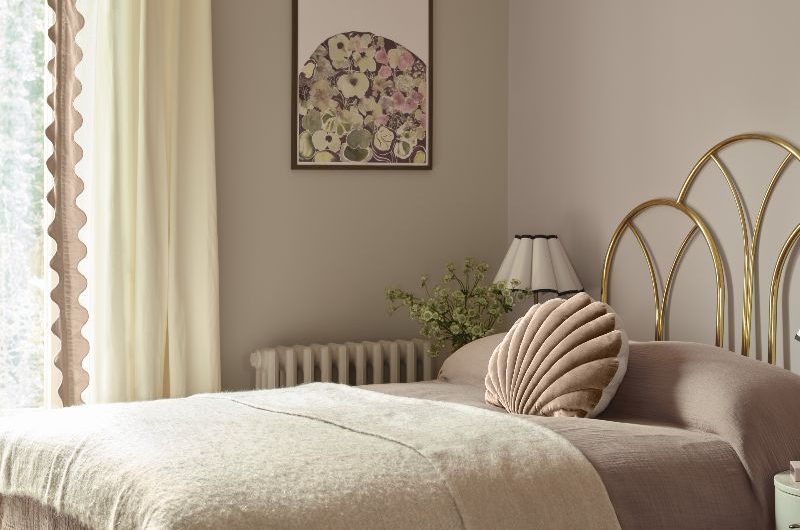
Ideally, position the bed centrally on the main wall and pick furniture that suits the scale of the room. “Avoid pieces that are too bulky or too small, as both can throw off the balance,” says Shelley. “Freestanding wardrobes should be tucked into corners or along less prominent walls.” Choose a few larger pieces of furniture over multiple smaller ones, and spread them out to maintain a sense of balance and openness.
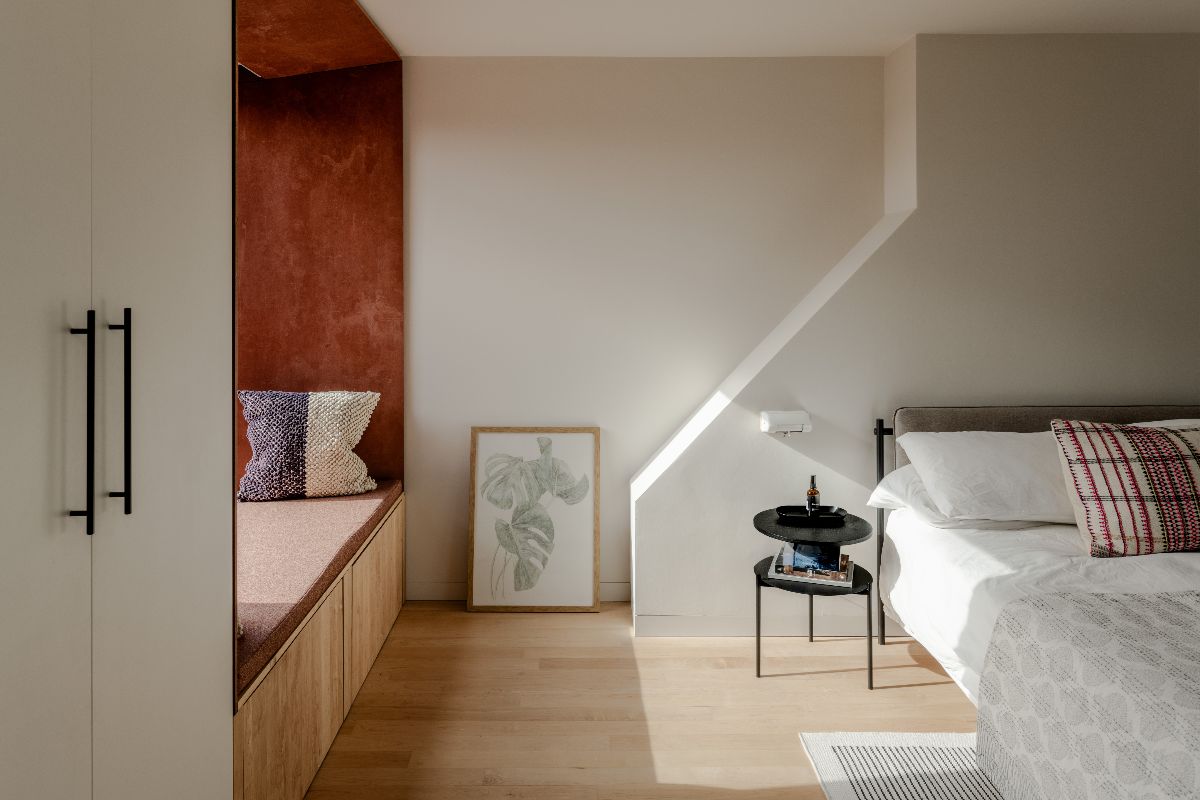
Maximising space
Symmetry can do wonders, too. “Bedside tables that are the right height and width for the mattress, or an interesting bedhead that is tall enough to become the focus of the room, can help make a mid-size room feel decorated,” says Beth Dadswell of Imperfect Interiors.
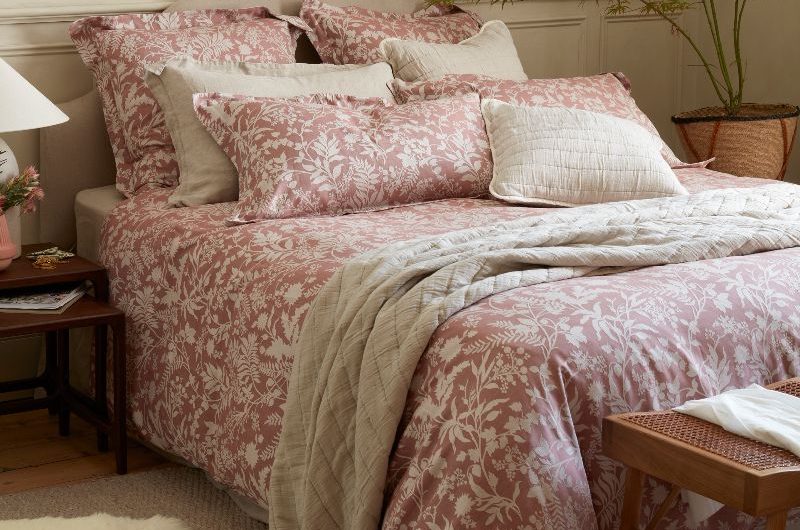
Built-in wardrobes, underbed drawers, or a window seat with hidden storage are great for maximising space. “Think about zoning and ensure every activity has its place, whether that’s sleeping, dressing, reading, or working,” says Leo Wood of Kinder Design.
A well-placed piece of furniture can act as a subtle divider, like a custom headboard that doubles as a storage unit. Wall lights free up surface space and keep the bedroom clutter-free, while muted hues lend an airy, calming quality, visually expanding the space.
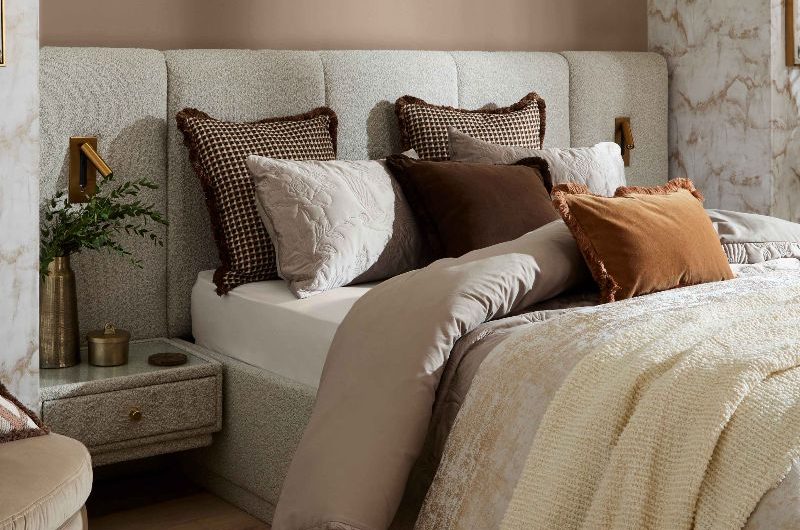
Large spaces
Large bedrooms can prove as challenging to design as compact ones and can end up feeling stark. Begin by defining the space with a statement bed – the largest possible – before going on to add other furnishings.
“Large bedrooms benefit from layered textures and generous proportions,” says interior designer Claire Garner. “A beautifully scaled headboard, statement pendant lighting, full-height curtains, or chests of drawers either side of a bed can help keep things in proportion and make a room feel considered, rather than empty.”
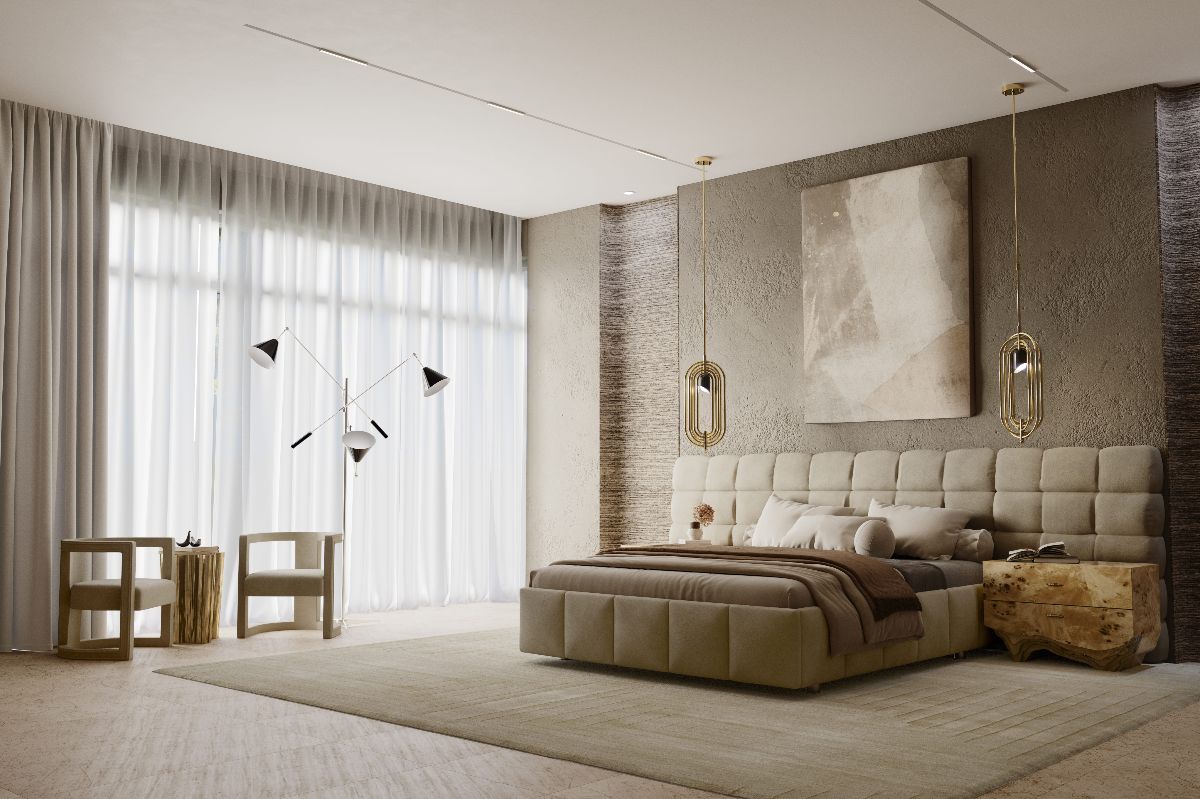
Zoning the room
Avoid placing furniture against the walls – by bringing pieces slightly inwards, you create depth and cohesion. Break up a large space into zones, for sleeping, dressing, or relaxing. Use rugs, lighting, and thoughtful furniture placement to define each zone and create flow.
If the room is big enough, consider sectioning off part of the space by installing a stud wall with gaps either side. “One side of the stud wall can act as a feature headboard, with the space behind it acting as a walk-in wardrobe,” says Clare.
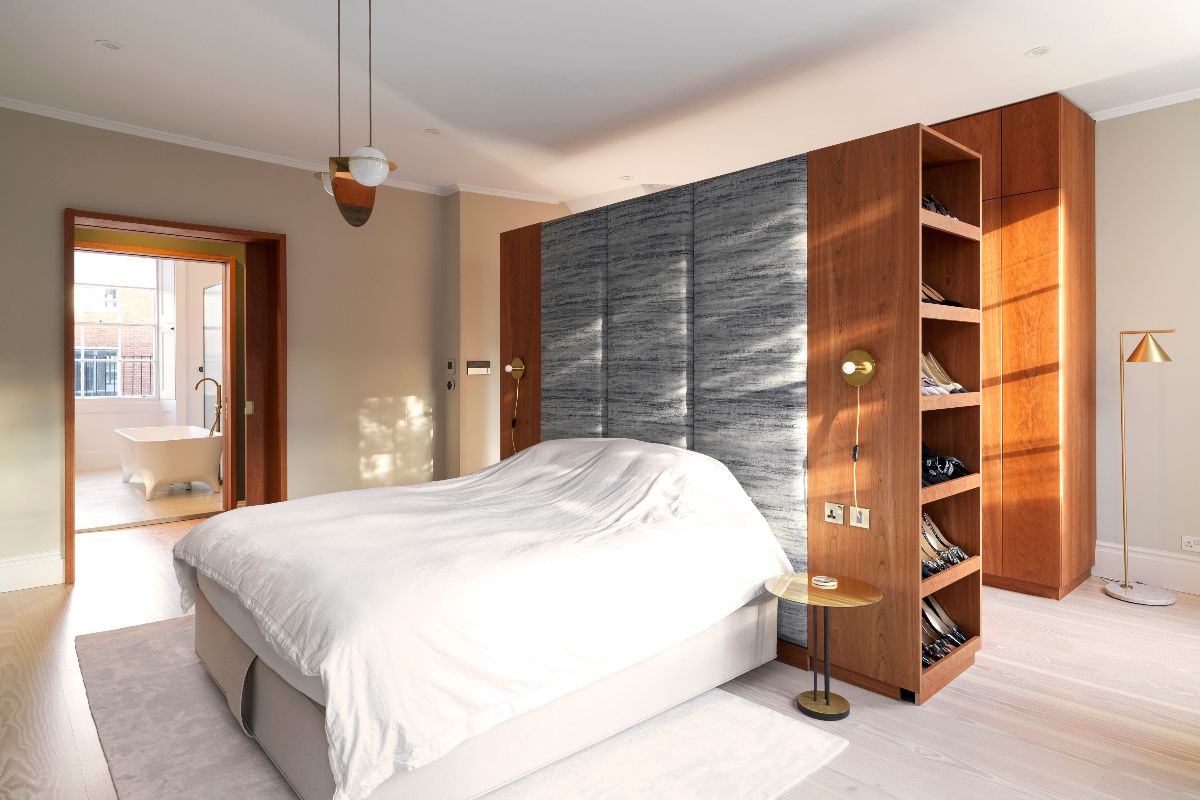
Layering textures is also key to making a big bedroom feel calm and cosy. “Heavier fabrics, like lined curtains or upholstered wall panels, look great and aid with acoustics, softening noise and making a vast space feel more cocooning,” says Debbie Leigh of Iliv. “This is something that’s often underestimated, but makes a huge difference in how restful a room feels.”

Dark colours can make a vast room feel more intimate, too. “Envelop the room in a single, sumptuous hue,” suggests Georgia Metcalfe of French Bedroom. “Deep sage or inky navy can draw the eye inward and create quiet sophistication.”
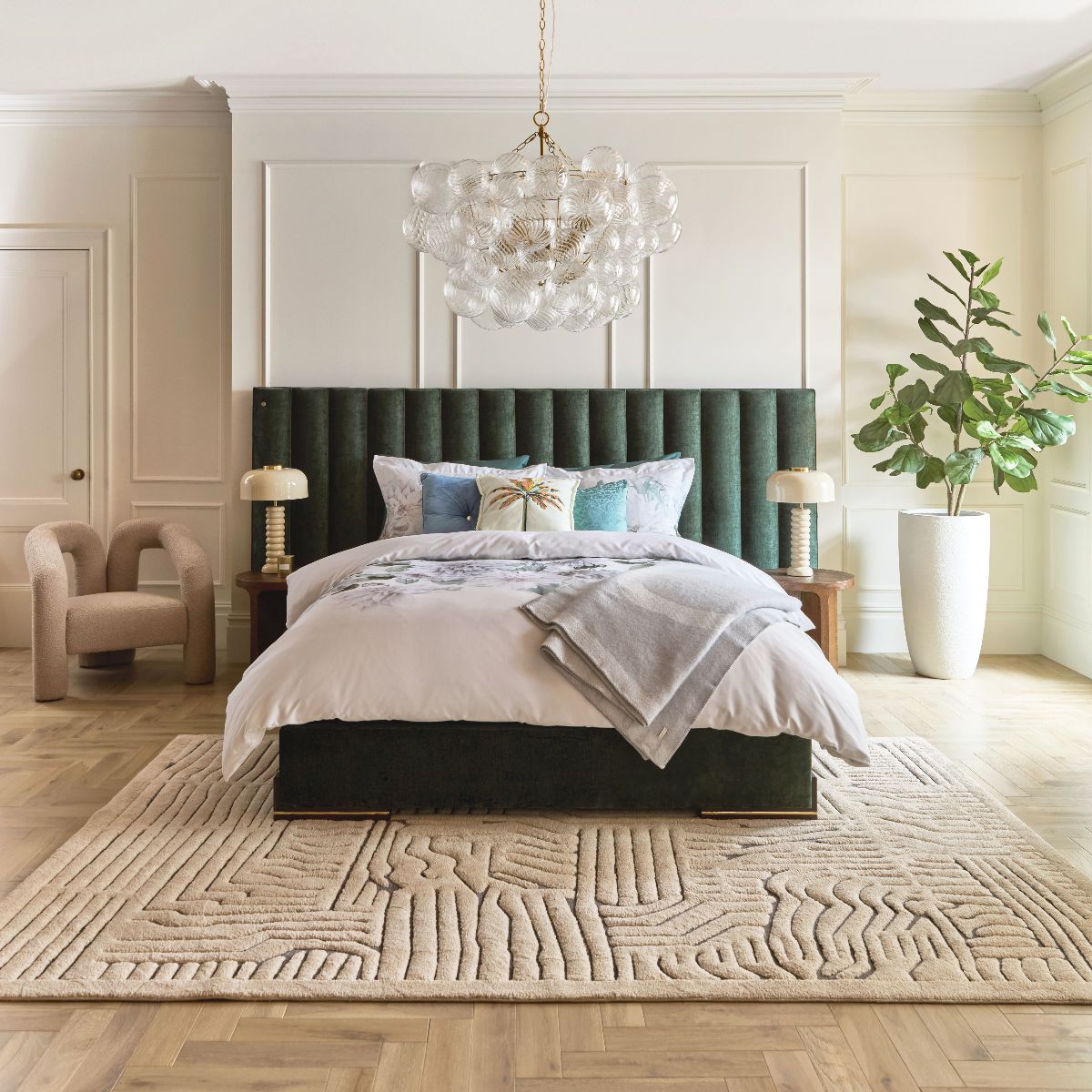
Bedroom design basics
No matter the room size, the basics of bedroom design remain the same. So, before you go, here are some design tips and tricks to keep in mind…
- The first step is to establish the room’s purpose and use this to guide your design decisions. “Create a list of requirements and put them in priority order,” suggests Ben Moody of Shacklewell Architects. “Number one is sleep, so choosing the right bed is key.”
- Leave at least 60cm of space around your bed, for easy movement and access to other furniture. Consider door clearance, too – sliding wardrobes or pocket doors are great when space is limited. A 20sq m footprint will allow room for storage, circulation space, and even a desk or seating area. Bigger rooms can accommodate an ensuite or dressing room.
- The right layout is essential, and how you approach it should be guided by the size of the room. Take dimensions and consider its shape. Is it awkward? Draw up a plan to work out how to arrange furnishings. Consider what space you have elsewhere, too. “Do you have a spare room that you never use, that could be repurposed as a dressing room or ensuite?” asks Clare Bolger of No Space Like Home.
- What atmosphere do you want to create in your bedroom; calm, cosy, airy? “Build a palette of materials and tones around this,” suggests Hannah Darby of Moxy & Co. “Natural textures like cane, wool, and linen soften spaces and keep things warm and grounded.”
- Finally, don’t overlook lighting. “Layering different light sources – ambient, task, accent – will provide both form and function, and allow full control over mood and practicality,” says British lighting designer Tom Raffield. Blend ceiling, wall, floor, and table lamps, for flexible illumination.
